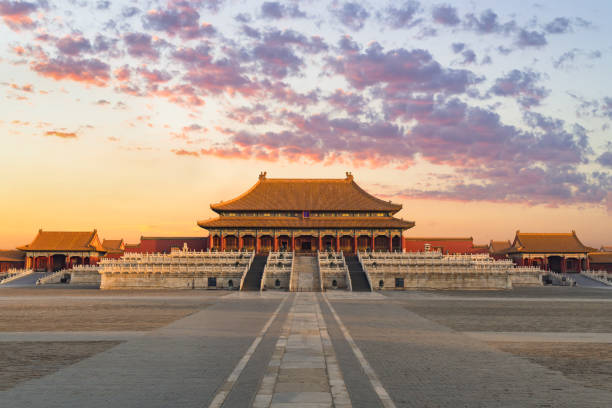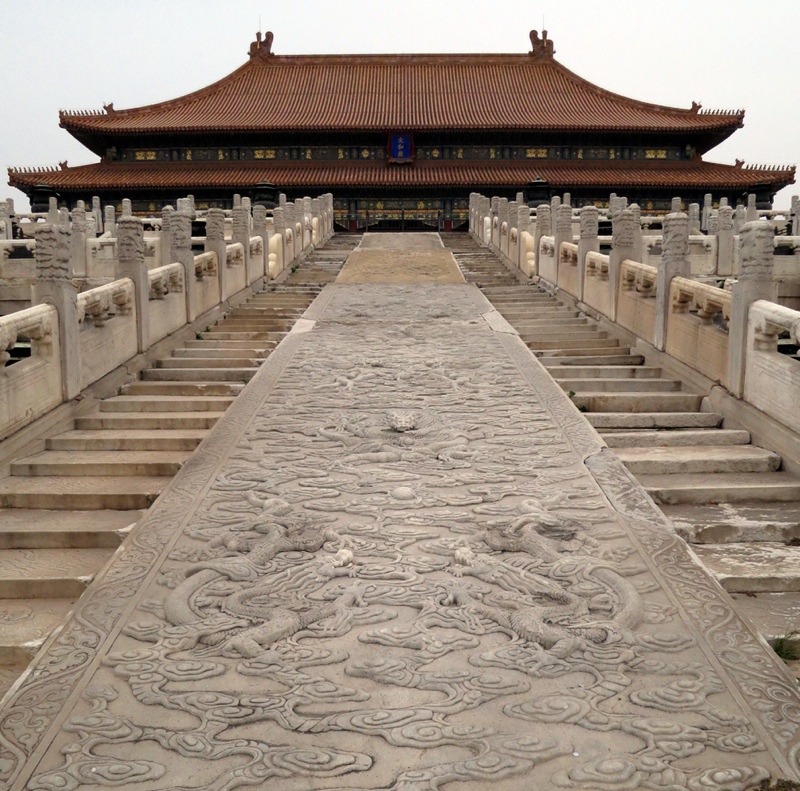Delving into the Imperial Splendor of Beijing’s Forbidden City

Welcome to a journey through one of the most awe-inspiring landmarks in China: Beijing’s Forbidden City. As a symbol of imperial power and architectural brilliance, this UNESCO World Heritage Site offers a captivating glimpse into China’s imperial palaces and rich history. Here at jusha.travel, we love sharing tips to make your China journey unforgettable, and exploring this Beijing cultural gem is a perfect way to immerse yourself in splendor China history. Whether you’re fascinated by Forbidden City Beijing, the tales of China imperial palaces, or the allure of Beijing cultural gems, this site embodies centuries of tradition and innovation.
The Historical Significance and Construction of the Forbidden City

The Forbidden City’s story begins in the early 15th century, a time when China was undergoing a dramatic transformation under the Ming dynasty. Emperor Zhu Di, having orchestrated a bold move of the capital from Nanjing to Beijing around 1420, commissioned this magnificent palace to solidify his rule. The construction spanned 14 years, employing over a million workers and utilizing premium materials like golden bricks from Suzhou and rare Phoebe zhennan wood transported from southern jungles. This monumental effort reflects the engineering prowess of ancient China and underscores the site’s status as a pinnacle of splendor China history.
Spanning 180 acres with 980 buildings and over 8,000 rooms, the Forbidden City served as the residence for 24 emperors across the Ming and Qing dynasties. It was not just a home but a fortress of power, enclosed by a towering moat and walls designed to deter invaders. Key defensive features included interlocking stones in foundations to prevent tunneling and watchtowers at each corner, inspired by traditional designs. Today, as Beijing’s Forbidden City, it attracts millions annually, offering insights into how imperial governance shaped China’s past.
For a deeper dive into China’s broader historical narrative, check out our post on Exploring China: History, Culture, and Modernity. It connects the Forbidden City’s legacy to overarching dynastic achievements like the Great Wall.
Architectural Marvels and Cultural Symbolism

The architecture of the Forbidden City is a masterclass in symbolism, blending practicality with profound cultural meaning. Influenced by feng shui principles, the complex faces south to honor the Sun, emphasizing the emperor’s divine connection between heaven and earth. North-south orientation and symmetrical layouts reflect Confucian ideals of hierarchy and harmony, where even roof decorations (like the number and style of roof figurines) denote a building’s importance.
Key structures include the Wu Gate, an imposing southern entrance adorned with lion-like paws; the Hall of Supreme Harmony, the largest ceremonial hall for imperial ceremonies; and the aptly named Imperial Garden in the north, a serene retreat featuring symbolic rocks and ancient trees. These elements aren’t mere aesthetics—they embody the balance of yin and yang, seen in the use of complementary colors like red (symbolizing prosperity) and gold (imperial power).
Culturally, the Forbidden City remains a vibrant link to Beijing’s traditions. Visitors can witness ceremonies or exhibitions showcasing artifacts that highlight China’s imperial legacy. Its design continues to inspire modern interpretations, proving the enduring appeal of Beijing cultural gems. For more on iconic sites in Beijing and beyond, read our comprehensive guide to Top 10 Must-Visit Cities in China for 2025 Adventures.
Practical Tips for Visiting and Cultural Insights
Planning a visit to the Forbidden City is easier than ever, thanks to advancements in China travel infrastructure. To avoid crowds, arrive early or opt for off-peak seasons like spring or autumn. Tickets can be booked online via apps, with audio guides offering multilingual explanations. For a budget-friendly experience, combine it with nearby attractions like the adjacent Jingshan Park for panoramic views, or explore street food in the Hutong neighborhoods—a nod to traditional Beijing cuisine like jianbing (savory crepes).
Culturally, be mindful of etiquette: photography is restricted in certain halls, and modest clothing is appreciated. The site now integrates technology, such as AR apps that reconstruct ancient ceremonies, merging historical reverence with innovation. Food-wise, China imperial palaces inspire modern dishes; try imperial-style banquets featuring crab roe or sesame balls for a taste of royal feasts.
This blend of past and present makes the Forbidden City a gateway to understanding cuisine’s role in culture. Learn more about this in posts like Hong Kong Food Advice: A Comprehensive Guide, which explores similar fusion in nearby regions.
The Forbidden City in Modern Context: Preservation and Innovation

As Beijing evolves, the Forbidden City adapts while preserving its essence. Part of the Palace Museum, it houses millions of artifacts, from bronze vessels to imperial scrolls, providing a tangible link to splendor China history. The Qing dynasty’s modifications, like added shamanist elements, reflect cultural shifts over centuries.
Today, initiatives like enhanced lighting and digital tours showcase China’s tech prowess, allowing virtual explorations. Sustainable practices ensure the site’s longevity, aligning with global heritage goals. For travelers, this offers a holistic experience—history buffs can delve into Confucian texts, while adventurers might enjoy themed tours.
Interested in more historical treasures? Our post Historical Places in China: A Comprehensive Guide covers similar landmarks, including connections to this imperial masterpiece.
Beyond the Forbidden City: Complementing Your Beijing Adventure
The Forbidden City’s allure extends to broader Beijing explorations. Pair it with the Great Wall for a day of ancient fortifications—both epitomize Forbidden City Beijing as gateways to China’s past. In culinary realm, nearby markets offer dumplings echoing imperial banquets, while tech centers highlight modern contrasts.
Practical enhancements include high-speed rail from Shanghai (just 5 hours) or domestic flights, making multi-city trips feasible. For authentic stays, consider guided tours or cultural classes to deepen immersion.
To prepare fully, read our detailed exploration in Why Beijing’s Forbidden City Is a Must-See in 2025. And for the Wall’s wonder, check out What Makes the Great Wall of China a Bucket-List Destination?.
In conclusion, the Forbidden City isn’t just a relic—it’s a living story of China’s imperial magnificence and cultural depth. As you plan your trip, remember jusha.travel as your go-to for insider advice. Have thoughts on visiting? Share in the comments! For more inspiration, explore related articles on our site.



